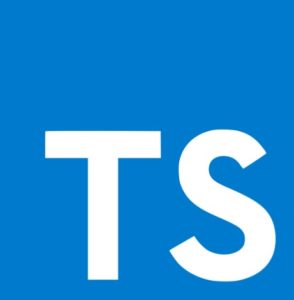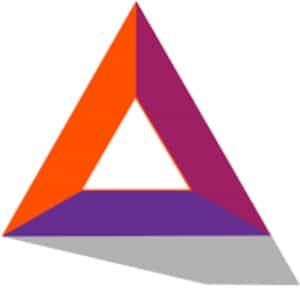
Scalable dApp Blockchain and Passive Income With RISE
Last updated on September 9th, 2022 at 08:32 am
 The introduction of blockchain and cryptocurrency to the world has opened a host of innovations across the globe. This technological advancement has shown the world new opportunities as well as provided the infrastructure for further growth.
The introduction of blockchain and cryptocurrency to the world has opened a host of innovations across the globe. This technological advancement has shown the world new opportunities as well as provided the infrastructure for further growth.
CryptoCoinMindSet wants to highlight various projects within the space. We are constantly looking at projects and bringing the innovators to you.
As we continue to review projects and bring them to you, we’re going to focus on those that provide the ‘biggest bang for the buck’… those projects that can appeal to more than just one demographic in the space.
RiseVision is one of those projects.
This project provides a fast, secure blockchain for developers, an interface for the consumers who will utilize these dApps and for those looking for earning opportunities in the crypto space, they have that too.
In a nutshell, RiseVision is a Delegated Proof-of-Stake DPoS powered blockchain which gives dApp developers a scalable, secure ecosystem to create the technology that will help shape the way the world transacts.
This move to utilizing Decentralized Applications, commonly called dApps, removes the need for central systems or third parties governing the personal data. The immutability and absolute transparency offered by the blockchain is what sets them apart.
This popularity has caused an overall increase in the number of dApp platforms and one prominent platform is RISE.
What is the aim of RISE?
RISE is looking to provide a graphical user interface for the creating of decentralized apps, creation of smart contracts and sidechains. This allows developers to have the security of the blockchain without having to build their own.
History of RISE
Created in 2016, the RISE platform was launched with security and ease of use at the forefront. This year of development saw significant milestones with importance being placed on NodeJS, JavaScript, and Ruby API.
In 2017 the innovations continued with the Mainnet launch in July. Scalability of their blockchain was ensured as the codebase was written in TypeScript. Additional API libraries included Python and C#.
2018 marked continued development with the launch of a new website, a block reward reduction to 12 RISE per block and a new web wallet.
2019… stay tuned; there are undoubtedly many updates in store.
RISE Blockchain
 The core codebase is TypeScript.
The core codebase is TypeScript.
This is a strict syntactical superset of JavaScript and is used in large scale web development projects. Its coding standards increases maintainability while and ensuring quicker development of projects in future.
RISE offers developers Software Development Kits (SDK) which allow for the creation of Decentralized Applications dApps.
Developers are able to choose their programming language.
They can choose from TypeScript/JavaScript, Python and C#.
RISE Wallet & DPoS
The RISE platform is secured by a Delegated Proof of Stake (DPoS) consensus algorithm. This idea came from blockchain engineer Daniel Larimer, who realized that Bitcoin mining was wasteful of energy and that the future of this mining would be in the control of large, centralized mining pools.
Not to mention that speed is always a consideration when it comes to dApps. Bitcoin’s slow system, Proof-of-Work (PoW), was not quick enough to manage transaction speeds that he thought were ideal – around 100,000 per second.
In a DPoS ecosystem, coin holders elect witnesses who secure the network. The voting power is determined by the number of tokens a voter holds. The ability to hold your position as witness gets harder as competition increases. Since voting is always ongoing, the quality of witnesses is maintained.
RISE has 101 delegate nodes. Delegates are elected by RISE holders voting from inside their wallet. Each vote has a 1 RISE fee and one wallet can only vote for a delegate each.
The elected Delegates are rewarded for running nodes in order to secure the network. Only the delegates are allowed to forge blocks and block rewards are shared holders.
Passive Income With RISE Wallet
 In 2018 a new RISE wallet was released. RISE holders are able to stake their coins and receive a portion of the block rewards for blocks forged by their respective delegate.
In 2018 a new RISE wallet was released. RISE holders are able to stake their coins and receive a portion of the block rewards for blocks forged by their respective delegate.
Once you setup your wallet and deposit your coins, you are able to vote for a delegate. Just navigate to the voting tab in your wallet, select the delegate you wish and vote. As mentioned previously, each vote costs 1 RISE.
Unlike traditional staking wallets, the RISE wallet does not have to remain open in order to receive your portion of any block rewards. Block rewards received by coin holders is proportionate to the number of RISE coins you have staked.
The Future of RISE
 The growth and innovation of this project will undoubtedly continue.
The growth and innovation of this project will undoubtedly continue.
Some of the intended developments include Dynamic Fees. This would address the need for a reliable fee structure for the accommodation of congestion on the network by detecting the changes in volume and altering the transaction fees accordingly.
Developer coding flexibility, blockchain scalability coupled with the inevitable direction of consumer transactions, RISE is poised to be a project that will help developers usher in new technologies for years to come.
Disclaimer
The information provided here is for INFORMATIONAL & EDUCATIONAL PURPOSES ONLY!
View our complete disclaimer on our Disclaimer Page






